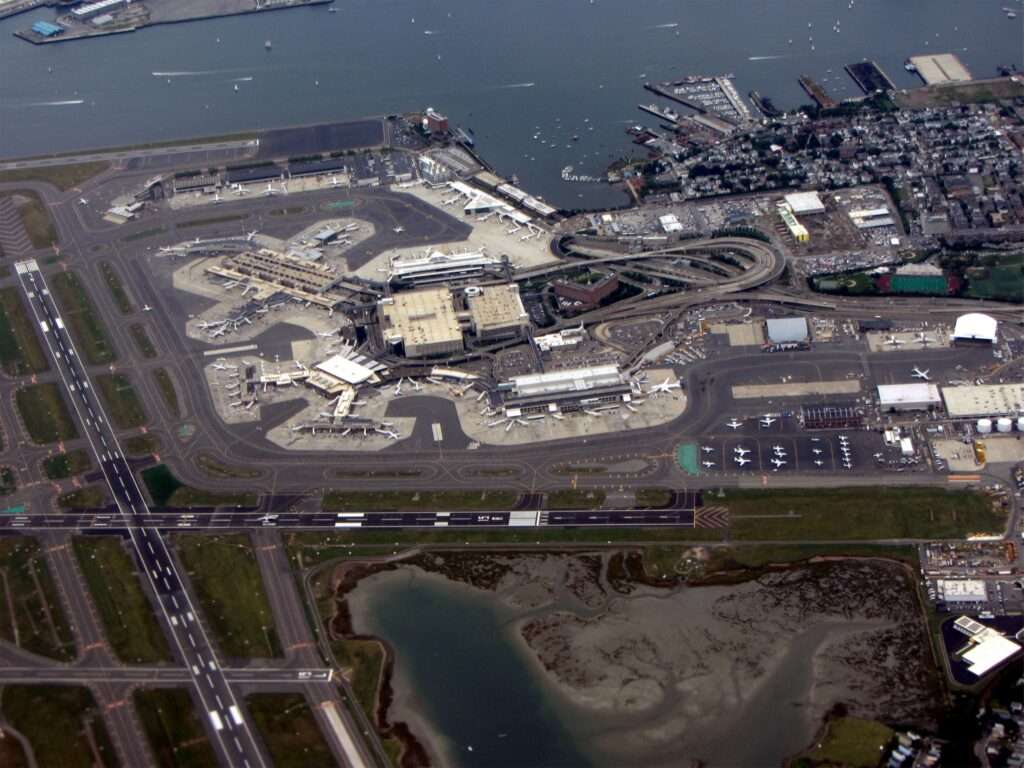Boston Logan International Airport, a bustling hub for travelers coming in and out of New England, boasts a rich history intertwined with the evolution of American aviation.
Its journey began not with the roar of jet engines, but with the hum of propellers on a small airfield dedicated to military service.
Taking Flight: The Early Days (1923-1940s)
The year was 1923.
Air travel was still in its infancy, a novelty for the adventurous.
It was in this pioneering era that Boston’s first airfield, then known as “Boston Air Port” at Jeffries Point, opened its doors (or rather, its landing strip) on September 8th.
Initially, the airfield served primarily as a base for the Massachusetts Air National Guard and the United States Army Air Corps.
Civilian aviation, however, was quick to recognize the potential of this new airfield.
Just three years later, in 1926, Colonial Air Transport, a local airline, began offering airmail services.
This marked the airport’s foray into commercial operations.
Passenger service soon followed, with the first scheduled flight between Boston and New York City taking off in 1927.
These early passenger flights, operated by Colonial Air Transport using Fokker aircraft, were a far cry from the luxurious airliners of today, but they represented a significant step forward in connecting cities.
The 1930s witnessed a period of growth and development for the airport.
The City of Boston took control of the facility in 1929, and crucial infrastructure upgrades were undertaken.
Runways were lengthened, access roads were paved, and new buildings were constructed, including an administration building.
This expansion reflected the increasing importance of air travel and Boston’s ambition to become a major aviation hub.
A significant milestone occurred in 1936 when the airport’s weather station became the official point for Boston’s weather observations and records by the National Weather Service.

This underlined the growing role that Logan was playing in the region’s infrastructure.
World War II and the Rise of Commercial Aviation (1940s-1960s)
The Second World War significantly impacted Logan Airport.
Military activity increased dramatically, with the airport playing a crucial role in supporting the war effort.
However, this period also saw a surge in commercial aviation as air travel became a more viable option for passengers and cargo.
Following the war, the focus shifted back to civilian operations.
In 1943, the airport was officially named Logan International Airport in honor of Lt. General Edward Lawrence Logan, a Spanish-American War hero from South Boston.
The post-war era witnessed a boom in commercial aviation, with airlines like Pan Am and BOAC establishing transatlantic routes from Boston.
To accommodate this growth, the airport underwent further expansion.
New terminals were built, runways were extended, and additional land was reclaimed from Boston Harbor.
The jet age, which began in the late 1950s, ushered in a new era of faster and more efficient air travel.

This further solidified Logan’s position as a major transportation hub.
The Jet Age and Modernization (1970s-Present)
The 1970s and 1980s saw continued growth at Logan Airport.
Passenger numbers steadily climbed, and the airport administration focused on improving efficiency and passenger experience.
New terminals were constructed, including Terminal E which remains the airport’s international terminal today.
The terrorist attacks of September 11th, 2001, significantly impacted the aviation industry, and Logan Airport was no exception.
Security measures were tightened, and new protocols were implemented to ensure the safety of passengers and staff.
Despite the challenges, Logan has continued to adapt and modernize.
In recent years, the focus has been on sustainability and environmental responsibility.

The airport has implemented a number of initiatives to reduce its carbon footprint.
This includes the use of electric vehicles and energy-efficient lighting.
Additionally, Terminal A achieved LEED certification, becoming the first certified building at Logan and the first at any US airport.
Today, Boston Logan International Airport stands as a testament to the evolution of air travel.
From its humble beginnings as a military airfield to its current status as a major international hub, Logan has played a vital role in connecting Boston to the world.
As the aviation industry continues to evolve, Logan is sure to adapt and innovate, remaining a critical piece of New England’s infrastructure for years to come.

Click the banner to subscribe to our weekly newsleter.

Click the photo to join our WhatsApp channel so then you can stay up to date with everything going on in the aviation industry!









